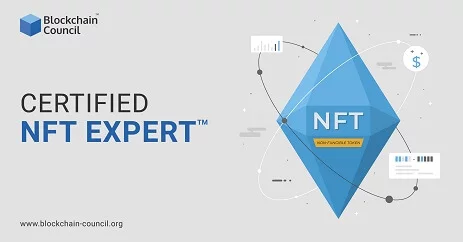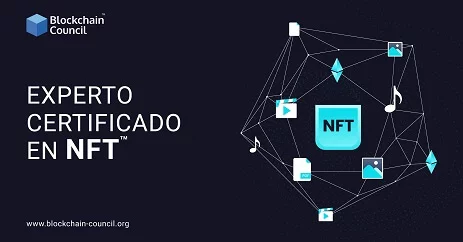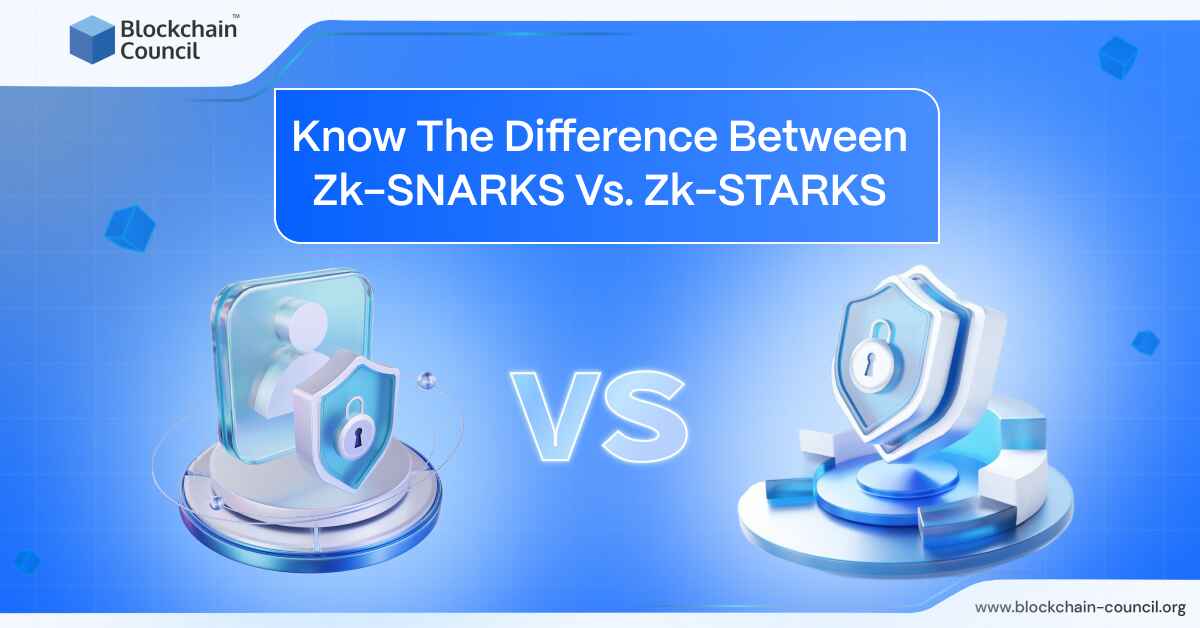
- Toshendra Kumar Sharma
- July 03, 2024
What is the Merkle tree in Blockchain?
Merkle trees, or hash trees, are vital in cryptography and computer science, with Ralph Merkle patenting the concept in 1979. They play a key role in ensuring the integrity and security of data structures, finding applications in hash Blockchain technology and various cryptographic systems.
- Basic Structure: Each leaf node in a Merkle tree is assigned the cryptographic hash of a data block. The non-leaf nodes, positioned higher in the tree hashing structure, carry labels derived from the cryptographic hash of their respective child nodes’ labels. This hierarchical arrangement provides a secure way to represent and verify the contents of large datasets.
- Efficiency in Verification: Merkle trees offer an efficient method for verifying whether a specific leaf node is part of a given hash tree. The verification process, known as a Merkle proof, requires computing a number of hashes proportional to the logarithm of the number of leaf nodes, making it more efficient compared to linear structures like hash lists.
- Binary Structure: While most Merkle trees adhere to a binary structure, where each node has at most two children, variations exist, such as the Merkle mountain range, which allows for more than two child nodes under each node. This flexibility in design caters to specific requirements in different applications.
- Hash Functions: Cryptographic hash functions, such as SHA-2, are commonly employed for hashing in Merkle trees due to their collision resistance and security properties. However, for scenarios where protection against unintentional damage is the primary concern, simpler checksums like CRCs (Cyclic Redundancy Checks) can be used.
- Balanced Tree Structure: Merkle trees are often designed to be balanced, ensuring that the tree remains relatively symmetrical. This balance is maintained by adjusting the tree’s structure, adding placeholder nodes if necessary. A balanced hash tree contributes to efficient and consistent verification processes.
- Dynamic Tree Size: Merkle trees can be designed to accommodate a dynamic number of leaf nodes. This adaptability is crucial in applications where the dataset size may change over time. Dynamic sizing allows for the addition or removal of leaf nodes without necessitating a complete reconstruction of the tree hashing.
- Bottom-Up Construction: The construction of a Merkle tree typically follows a bottom-up approach. The leaf nodes are initially assigned the hash of individual data blocks. The parent nodes’ labels are then computed based on the concatenation or hashing of their children’s labels, gradually building up to the Merkle root of the tree. This construction method ensures an efficient and systematic organization of the data.
- Parallel Processing: In certain implementations, the hashing of nodes in a Merkle tree can be performed concurrently. This parallel processing capability enhances the speed of tree construction and verification, making it well-suited for applications demanding high performance.
- Duplicate Subtrees: While uncommon, Merkle trees can include duplicate subtrees, especially in scenarios where the same data block appears in multiple positions within the tree. Handling duplicates involves adjusting the hashing process to maintain the overall integrity of the tree.
Also Read: Top 5 Jobs In The Web3 Space
Potential of A Merkle Tree In Blockchain
Merkle trees, with their intricate structure and cryptographic underpinnings, possess significant potential across various domains, primarily revolving around data integrity, security, and distributed systems. Here’s a detailed analysis of their potential:
Efficient Data Verification in Distributed Systems
Merkle trees shine in distributed systems, offering a mechanism for efficient data verification. By utilizing hash functions to create a hierarchical structure, they enable rapid verification of large datasets, a critical feature in distributed and peer-to-peer networks. This efficiency is particularly evident in systems like Tor, Bitcoin, and Git.
Blockchain Security and Cryptocurrencies
A cornerstone application of Merkle trees lies in hash Blockchain technology, where they play a pivotal role in ensuring the security and integrity of transactions. In the context of cryptocurrencies like Bitcoin and Ethereum, Merkle trees are employed to form a verkle trees-based chain of transaction blocks, enhancing the trustworthiness and transparency of decentralized ledgers.
Hash-Based Cryptography and Secure Communication
Merkle trees are integral to hash-based cryptography, contributing to secure communication and transaction systems. Their hierarchical structure allows for the efficient verification of data integrity, making them valuable in cryptographic protocols that underpin secure communication channels, digital signatures, and secure data storage.
Data Degradation Prevention in File Systems
In file systems like InterPlanetary File System (IPFS), Btrfs, and ZFS, Merkle trees are a key tool in countering data degradation. Their structure facilitates the detection and prevention of data corruption or loss, ensuring the longevity and integrity of stored data. This is especially crucial in large-scale distributed file systems.
Database Management and Data Synchronization
Merkle trees play a crucial role in database management, providing an efficient means of verifying data integrity. In scenarios where multiple copies of databases need to be synchronized, the hierarchical structure of Merkle trees simplifies the verification process, ensuring consistency across distributed databases.
Tamper-Resistant Data Structures
The cryptographic nature of Merkle trees makes them inherently tamper-resistant. Any alteration in the underlying data would require changes throughout the tree structure, making it computationally infeasible to tamper with data without detection. This property enhances the overall security and trustworthiness of systems employing Merkle trees.
Version Control Systems and Git
Merkle trees find application in version control systems like Git. Each commit in Git is represented by a Merkle tree, enabling efficient tracking of changes and simplifying the process of determining differences between versions. This contributes to the reliability and efficiency of version control systems.
Data Auditing and Historical Verification
Merkle trees facilitate historical data auditing by providing a verifiable chain of data versions. This capability allows for the efficient verification of the integrity of historical data, a crucial feature in fields where maintaining an unalterable historical record is essential.
Decentralized Applications (DApps) and Smart Contracts
In the realm of decentralized applications and smart contracts, Merkle trees are employed to enhance data integrity. They play a role in verifying the state of decentralized systems, ensuring that smart contracts execute based on accurate and tamper-resistant data.
Parallel Processing and Scalability
Merkle trees can be processed in parallel, contributing to scalability in systems dealing with a large volume of data. This parallelization aids in quick verification, enhancing the overall performance of distributed systems.
Cross-Verification in Decentralized Networks
Merkle trees enable cross-verification of data between nodes in decentralized networks. Each node can independently verify the integrity of the data through the Merkle tree structure, enhancing the overall trust and reliability of the decentralized system.
Interoperability and Standardization
The adoption of Merkle trees in various applications contributes to interoperability. Standardization around Merkle structures facilitates compatibility between different systems and platforms, fostering a unified approach to data integrity and security.
Also Read: How To Land A High-Paying Web3 Job?
What is the Merkle root?
Every transaction has a hash associated with it. In a block, all of the transaction hashes in the block are themselves hashed (sometimes several times — the exact process is complex), and the result is the Merkle root. In other words, the Merkle root is the hash of all the hashes of all the transactions in the block. The Merkle root is a part of the block header. With this scheme, it is possible to securely verify that a transaction has been accepted by the network (and get the number of confirmations) by downloading just the small block headers and Merkle tree – downloading the entire block chain is unnecessary. This feature is currently not used in Bitcoin, but it will be in the future.
The idea is that the Merkle tree allows for you to verify transactions as needed and not include the body of every transaction in the block header, while still providing a way to test the entire Blockchain (and therefore proof of work) on every transaction.
To understand this, first, understand the concept of a tree. Consider an eight trade block. Imagine each of those eight transactions at the base of a pyramid: these are leaves. Put four “branches” on the second tier of the pyramid and draw two lines from each of them to the leaves so that each branch has two blades attached to it.
Potential of Merkle Roots
Immutability and Tamper Resistance
Merkle trees contribute to the immutability of data. Once a Merkle tree is constructed, any change in the underlying data would require alterations throughout the tree, ultimately affecting the Merkle root. This property enhances tamper resistance, making it computationally infeasible to alter data without detection.
Reduced Storage Requirements
In scenarios where storage is a critical concern, Merkle Roots offers a solution. By representing a large dataset with a single hash (the Merkle root), the storage requirements are minimized. This efficiency is particularly valuable in resource-constrained environments.
Smart Contracts and Cryptocurrencies
Beyond basic transactions, Merkle roots find applications in smart contracts within Blockchain ecosystems. They facilitate the verification of complex conditions and agreements, enhancing the functionality and reliability of smart contract execution. In cryptocurrencies, Merkle roots contribute to the validation of transaction inclusion in blocks.
Parallel Processing and Scalability
Merkle trees can be processed in parallel, accelerating the verification process. This parallelization is advantageous for systems handling large datasets, contributing to scalability. In Blockchain networks, where the number of transactions can be extensive, the ability to parallelize verification becomes crucial for performance.
Efficient Verification of Large Data Sets
Merkle trees efficiently enable the verification of extensive data sets. With their hierarchical structure, non-leaf nodes store hashes of child nodes, facilitating quick and secure data verification. This is particularly crucial in scenarios where the swift confirmation of data integrity is essential.
Also Read: What Are The Best AI Video Editing Tools?
Integrity of Data in Sets
Ralph Merkle’s concept, introduced in the 1980s, focuses on efficiently ensuring the integrity of data within a set. In systems where accuracy and completeness are paramount, Merkle trees offer a reliable method of data validation.
Blockchain Cryptography
Merkle trees serve as a foundational element in Blockchain technology. In networks like Bitcoin, they are integral to the cryptographic processes, securely verifying transaction data. The use of Merkle roots in Blockchain ensures the trustworthiness of the entire system.
Quick and Efficient Data Verification
Each Merkle tree culminates in a single Merkle root, simplifying and expediting the verification of extensive data. This characteristic makes Merkle trees suitable for systems requiring rapid data verification, enhancing overall efficiency.
Maintaining Integrity in Blockchains
Merkle trees are pivotal in Blockchain technology, providing a mechanism to verify transactions and uphold the integrity of stored information. This is vital for ensuring that the data within a Blockchain remains unaltered and reliable over time.
Ensuring Data Consistency and Security
Beyond Blockchain, Merkle trees contribute significantly to ensuring data consistency and security in various applications. The binary tree structure aids in verifying the integrity of large datasets, promoting consistency and security across different systems.
Also Read: Artificial Intelligence Vs Machine Learning – What Are The Differences?
Cross-Verification in Decentralized Systems
In decentralized systems, Merkle roots play a role in cross-verifying data between nodes. Each node can independently verify the integrity of the data by checking the Merkle root, enhancing the overall trust and reliability of the decentralized network.
Historical Data Integrity Auditing
Merkle roots facilitate historical data integrity auditing. By maintaining Merkle roots for each version of a dataset, one can verify the integrity of any historical version efficiently. This is particularly valuable in fields where maintaining an unalterable historical record is essential.
Interoperability and Standardization
The use of Merkle trees and roots in various applications contributes to interoperability. Standardization around Merkle structures facilitates compatibility between different systems and platforms, promoting a unified approach to data integrity and security.
This comprehensive integration of Merkle trees and roots in Blockchain and other cryptographic systems underscores their crucial role in ensuring data integrity, security, and efficient verification across a wide array of applications. The future potential of these structures in enhancing and securing digital transactions and data storage remains significant and ever-evolving.
Conclusion
In conclusion, the Merkle Tree and its derivative, the Merkle Root, stand as integral elements in the architecture of Blockchain. Their ability to streamline data verification and enhance the security of transactions showcases their importance in the decentralized world of digital ledgers. As Blockchain technology continues to evolve, a solid grasp of these concepts becomes increasingly valuable for developers, enthusiasts, and anyone seeking a deeper comprehension of the mechanisms that drive the decentralized future.
FAQ’s
- A Merkle tree, also known as a hash tree, is a hierarchical data structure in cryptography and computer science.
- It ensures the integrity and security of data by assigning cryptographic hashes to leaf nodes and generating non-leaf nodes’ labels based on the hash of their respective child nodes’ labels.
- Merkle trees offer efficient verification of large datasets through a hierarchical arrangement.
- Merkle roots are the topmost nodes in a Merkle tree, representing a single hash that is the result of hashing all the transaction hashes in a block.
- They play a crucial role in enhancing the security and efficiency of Blockchain technology by allowing verification without downloading the entire Blockchain.
What is the difference between Merkle root and hash?
- A Merkle root is a specific type of hash, representing the topmost hash in a Merkle tree formed by hashing all transaction hashes in a block.
- A hash, in a general sense, is a result of applying a hash function to any data, while a Merkle root is specifically associated with the structure and function of Merkle trees in the context of Blockchain technology.
What is the difference between Merkle root and Merkle tree?
- The Merkle tree is the entire hierarchical data structure that includes leaf nodes (transaction hashes) and non-leaf nodes (labels derived from hash functions).
- The Merkle root is the topmost hash in the Merkle tree, representing the culmination of hashing all transaction hashes in a block.
- In summary, the Merkle tree is the structure, while the Merkle root is the final hash result at the top of that structure in the context of Blockchain technology.
































































 Guides
Guides News
News Blockchain
Blockchain Cryptocurrency
& Digital Assets
Cryptocurrency
& Digital Assets Web3
Web3 Metaverse & NFTs
Metaverse & NFTs
